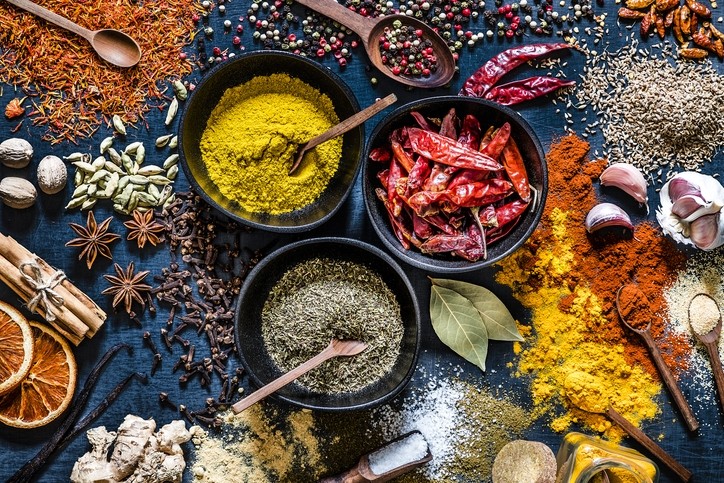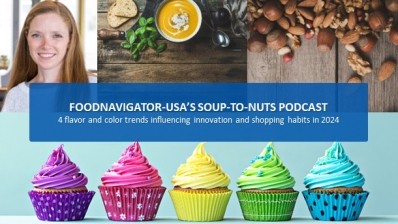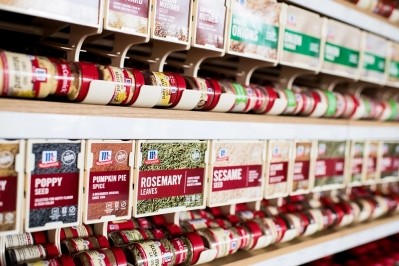Burlap & Barrel’s direct sourcing model, single origin spices offer unexpected and regional twists on familiar flavors that appeal to new & established home cooks

But, it is worth it for the bold taste experience they deliver to consumers accustomed to “bland mediocrity,” and the economic opportunities they offer single family farms or local cooperatives preserving heirloom spice varieties that they grow for flavor rather than volume, long-time friends and co-CEOs Ethan Frisch and Ori Zohar told FoodNavigator-USA.
“We are a single origin-based company and a social enterprise. We work with small farms in 26 different countries – mostly producers who have never exported before, people who typically have been selling to the commodity market, but are growing something that’s really exceptional,” Zohar said.
He explained that Burlap & Barrel’s commitment to helping farmers navigate FDA registration and food safety process so they can export directly to the US, where the company packs the spices and sells predominantly direct-to-consumer, is “unprecedented in the history of the spice trade.”
Going back thousands of years, the spice trade “has always been a series of middleman brokers” who consolidate spices from producers around the world to achieve economies of scale that may result in lower prices but costs them the ability to trace ingredients back to the source and increases the risk of contamination or adulteration, Zohar explained.
He adds that modern consumers increasingly want to know “not just how to use spices, but where they come from and what they are so they can become better and better cooks.”
“Fun and interactive” education helps make unfamiliar spices more approachable
Burlap & Barrel’s approach to sourcing allows it to offer hard-to-find ingredients that may previously have been unknown to consumers from locations that may be equally unfamiliar. For example, the company doesn’t sell simple coriander, cardamom or bay leaves. It sells Red River Coriander, Cloud Forest Cardamom and Caribbean Bay Leaves.
This necessitates an equally innovative approach to consumer outreach and education, Zohar said.
“We carry stuff from all around the world, which you might not be very familiar with … so the breadth of introduction that we can do … lets us talk to a lot of different people across different skill levels, cooking interests and expertise,” Zohar said.
For example, Frisch said, during the pandemic the company saw a rapid influx of “really, really good home cooks” who knew kitchen basics and were looking for higher quality or hard to find spices. But, as the threat of the pandemic has ebbed, the company’s consumer base has shifted to include an audience that “has gotten a little younger, a little less experienced,” who are still eager to learn and try something new.
Frisch says the company tries to meet consumers where they are and make learning about spices “fun and interactive,” by including on the packaging QR codes that take consumers to recipes on its website or playlists on Spotify they can listen to while cooking. The company also includes more basic instructions, such as where to store spices in the kitchen.
An expanding portfolio for an expanding consumer base
As the company’s consumer base has expanded it also has expanded its selection to include spices and blends with which people may be more familiar but at a higher quality than is typically available.
For example, included in the company’s “everyday basics” is Purple Stripe Garlic, Toasted Onion Powder, and iconic Herbs De Provence blend, and Nyanza Vanilla Powder that promises the “sweet, classic vanilla flavor” but “with a beautiful date-tannin aroma."
“Our best sellers are the ones you would imagine – our Royal Cinnamon is our No.1 best-seller. It is super strong, very sweet and spicy. But also our Zanzibar Black Pepper, which is a wild grown, lemony, spicy black peppercorn from Zanzibar. Our Cumin from Afghanistan does really well. And then our top five and top ten best-sellers including Black Lime from Guatemala, and our Black Urfa Chili from Turkey, which we are one of the only companies in the country to carry,” Zohar said.
He added, “People are interested in new versions of familiar spices and we do really well selling better versions of things that people are familiar with and which helps them move a bit out of their comfort zone.”
For those who are unsure about committing to a full size bottle of a spice selling for $5.99 to upwards of $40, Burlap & Barrel offers a playful Spice Passport, which offers single servings of eight spices in a playful package that looks like a passport and folds open to reveal a colorful map where the spices are sourced.
The company also leans heavily on collaborations to draw in new consumers, including a recently released California Heat blend of dry chili crisp made with LA Times Food or a Grillin’ Out Steak Seasonin’ made with Nathaniel Rateliff or a collection of everyday blends developed with Chef Marc Murphy.
“When you are learning how to cook, you might not know the exact proportion of spices or have all of the spices you need on hand to make a dish in the traditional way, so we find new cooks tend to buy more spice blends,” which can also add a layer of “whimsy and fun and nostalgia” for more established home cooks, Frisch said.
Looking forward, the founders predict Americans will become more adventurous in the spices and flavors which they use, but that new products still need to be familiar and accessible.
With that in mind, Zohar said the company is excited to bring forward a selection of high quality sugars, including a jaggery from India, maple sugar from Vermont, and extracts of traditional baking spices that will deliver familiar flavors in a new format.





















